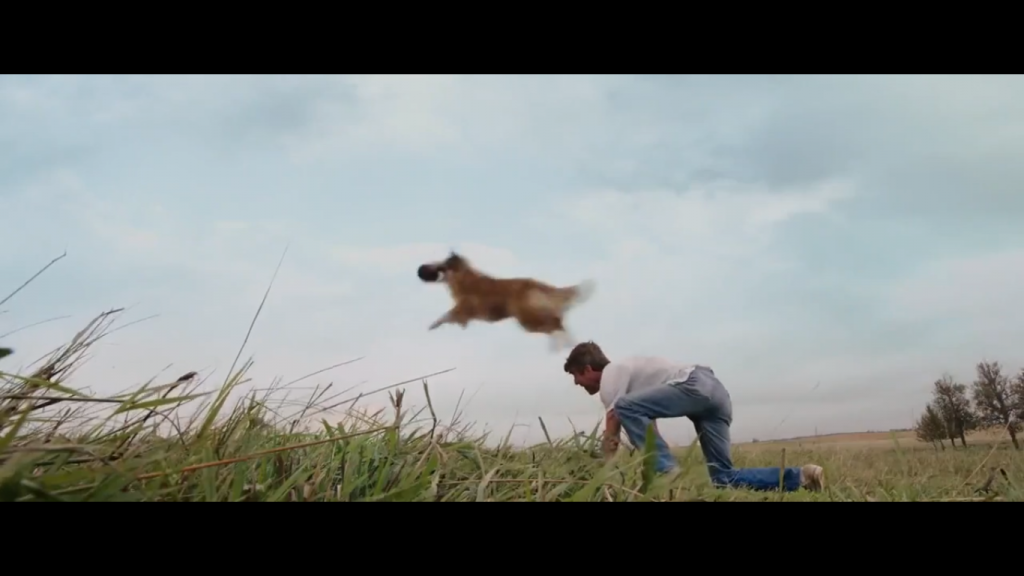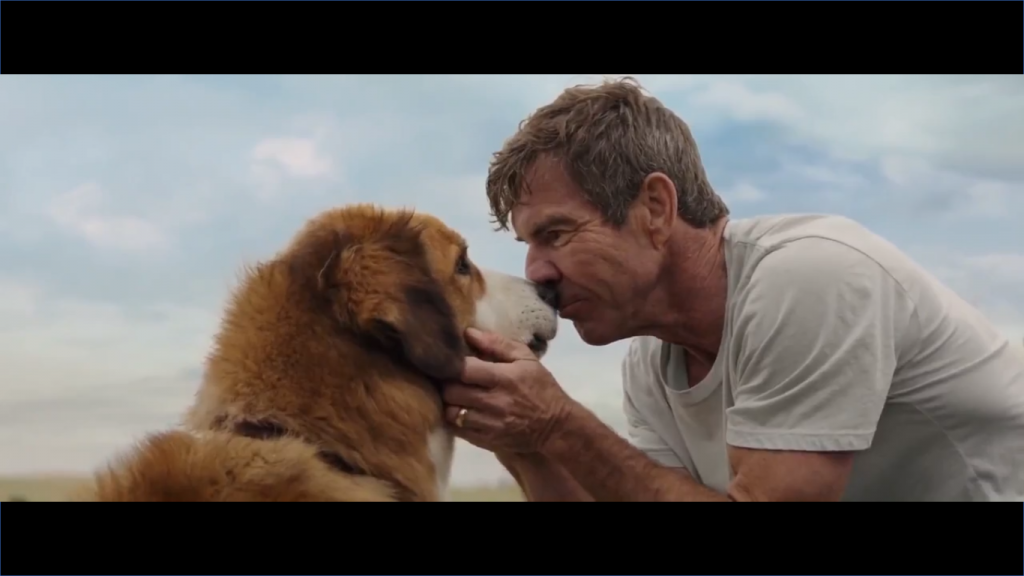
Lasse Hallström’s film A Dog’s Purpose presents the relationship between a dog and its first owner, Ethan Montgomery (Dennis Quaid as Ethan’s adult version). The intriguing question “what is the real purpose of a dog” becomes for Bailey (Josh Gad) the triggering of a number of adventures which results in the last sequence where the answer is finally given: “be here now.” For the most part, the story is presented through the internal focalization of the protagonist, the dog, which is crucial for our identification with him. This is achieved through the use of a subjective camera and different formal aspects such as the voice-over narration, or point of view shot that can be seen in Figure 1; all these possible techniques used will work together to help us follow Bailey’s journey.
Instead of being a movie where we can see an opposition between human beings and animals, we are introduced a story about the connection between a dog and his owner, blurring the barrier that divides human and animals sometimes. Ethan encounters Bailey, or what is Bailey’s spirit, thanks to the unique trick that only both of them could possibly know (Figure 2) and to the responding of his nickname “boss dog.” This affective bond is portrayed cinematically through the composition of the frame in Figure 3. The medium close-up shot along with the symmetrical position of the two characters help to create that intimacy and affinity that exists between them. The sky, which is the only thing that can be seen in the background, together with the high-key lighting not only tries to evoke an emotional response on the audience, but also to express the internal state of the character: the happiness of having found his purpose in life. This story then epitomises the well-known phrase of dogs being “man’s best friends” and ascribes the stereotypical and common perception of them as loyal, faithful, protectors, and companions.


Finally, the mise-en-scène in Figure 4 with Bailey’s reflection about what he has learnt throughout his multiple lives -and especially the use of the sunset in here- is remarkably significant as it symbolizes the end of Bailey’s journey as well as the end of his search. The film has an internal voice-over narration where Bailey’s thoughts are constantly heard. He is humanized in a way that makes the audience empathize and identify with him easily: rational thinking. This ability is mainly shown through the key question of the movie: the meaning of life. Therefore, the ending of A Dog’s Purpose makes the viewer wonder whether it is the human being the one who has the responsibility to be there for the dog, to take care of it and feed it, or it is actually the dog the one that has a responsibility towards its owner.
